
38 minute read
Soul enterprise
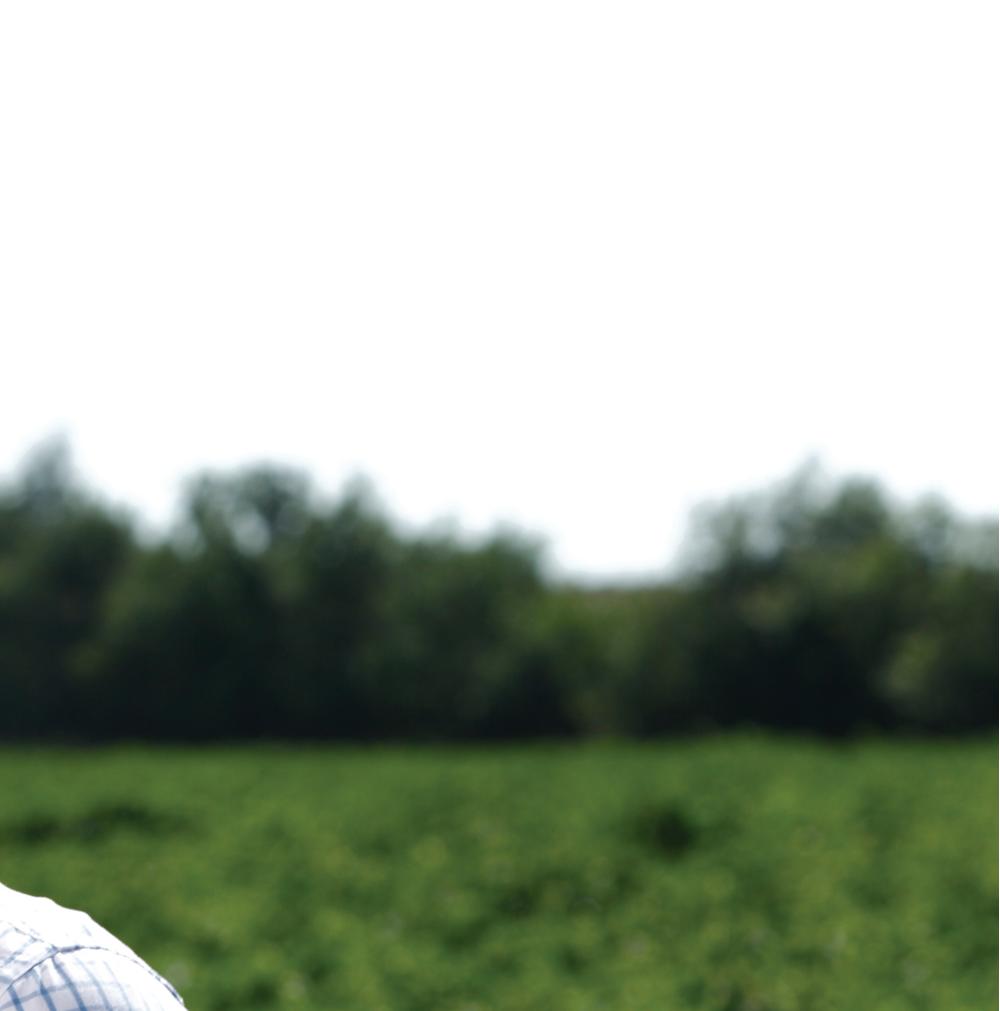
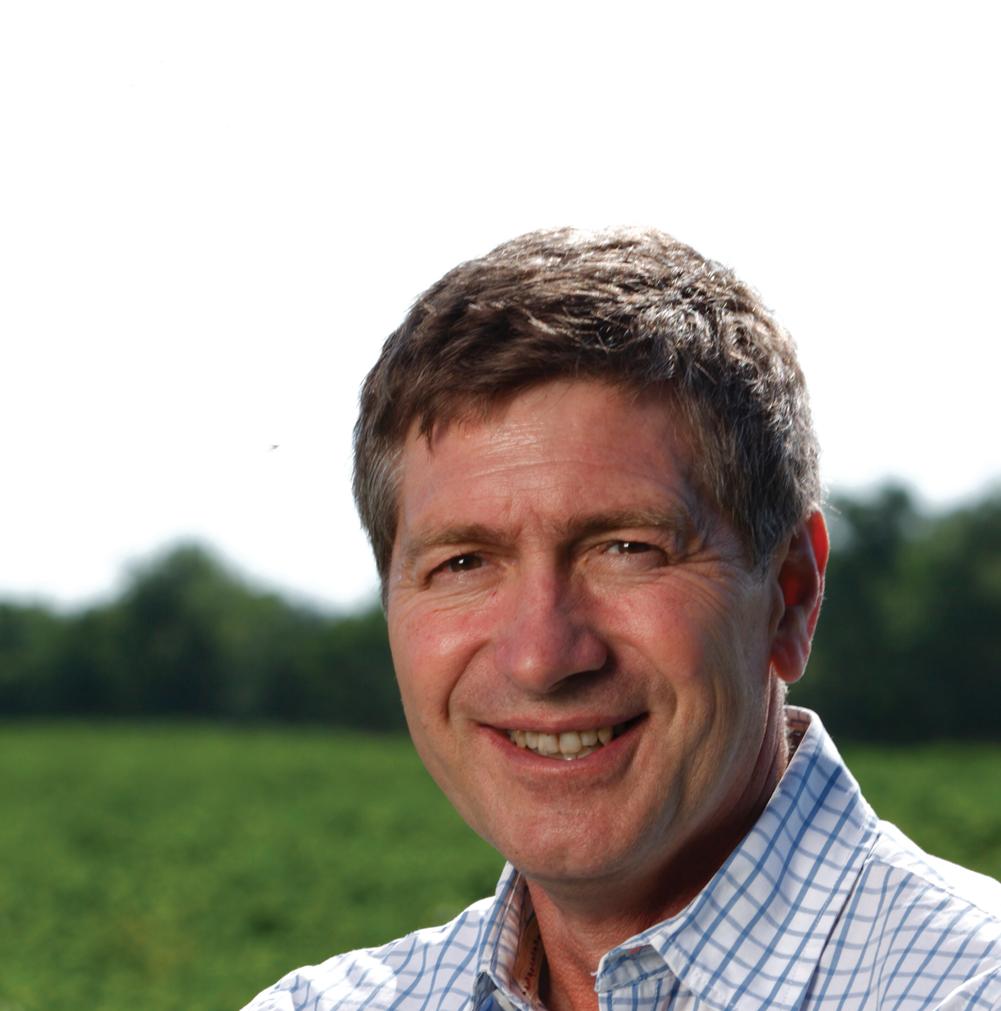
Advertisement
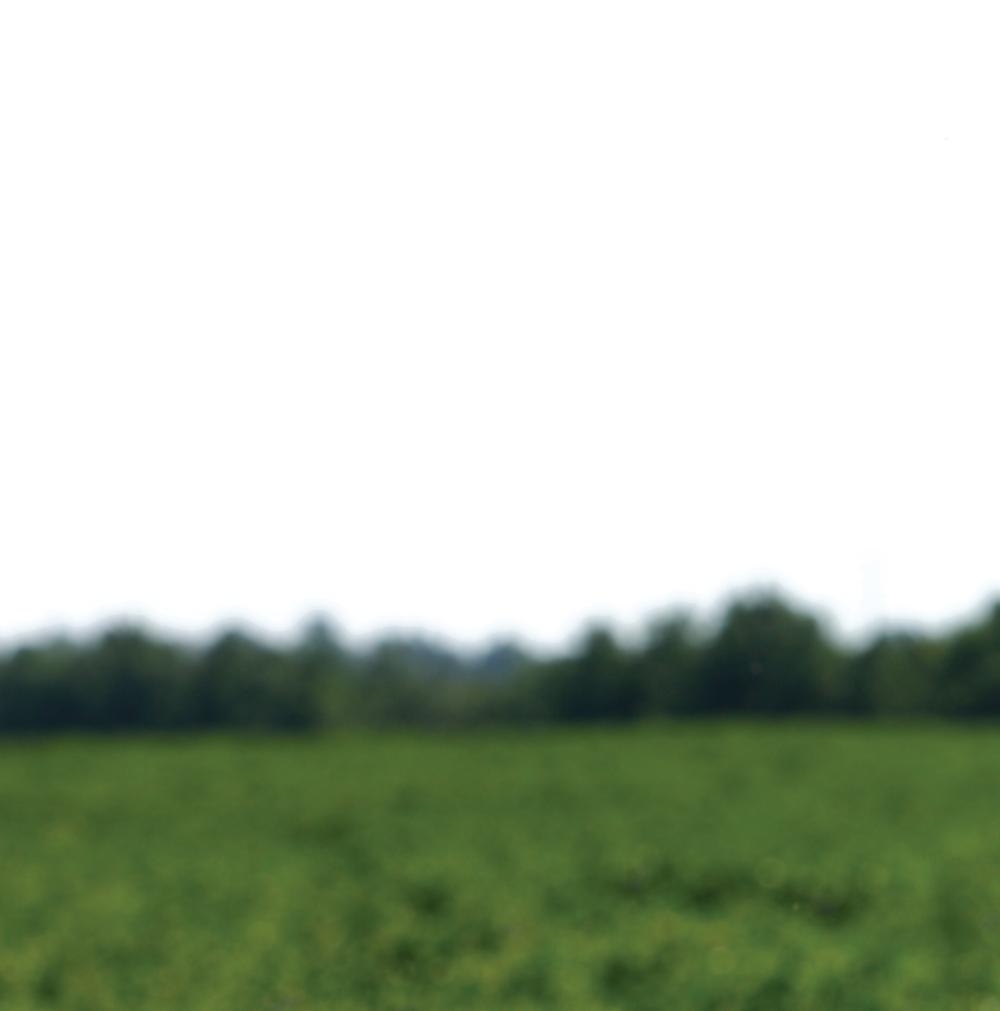

Down on the farm
The Bible begins and ends in the garden (farm?). Within paragraphs God is ordering the earth to bring forth vegetation — plants yielding seed and trees of every fruit.
Flip to the very last page and Revelation speaks of the tree of life with 12 kinds of fruit, one for each month, and the “leaves of the tree are for the healing of the nations.”
From beginning to end, the Bible features people of the soil.
The fi rst humans are assigned to tend the garden and encouraged to freely eat of it. It ensured physical survival, provided natural beauty, and became a way to fulfi ll vocations.
Three chapters later, God is “walking in the garden in the cool of the day” (Gen. 3:8). A farmer might envision God wading through a fi eld of wheat or strolling along furrows of potatoes.
Much later, the Israelites, even in exile, are encouraged to “plant gardens and eat what they produce” (Jer. 29:5).
The New Testament, too, has plenty of horticultural images.
Jesus speaks of sowers going out to plant, of mustard seeds, of vineyards being pruned, of fi g trees that don’t produce.
His fi nal prayers and arrest take place in a garden.
The Apostle Paul uses tree grafting to depict the integration of Gentiles into the chosen people under the new covenant. What a lovely image of inclusion.
The garden is often a parable of the kingdom of God. You don’t have to look far to see farm-related pointers to the ways of God with humanity — soil, planting, water, shade, weeding, thinning, pruning and harvest.
The garden — the farm — is a central biblical metaphor. May those who work there see themselves as made in the image of God, and doing the work of God in the garden, on the farm, and in the various gardens of their own lives. ▲ Want to be a leader? Then exercise the gifts you already have, says John Bowen, professor at Wycliffe College in Toronto.
He tells aspiring ministry students that if they have a good sense of who they are and their natural gifts (even business skills), they have a leg up to becoming leaders.
Many students may have business experience and may even have started their own companies, “so we’re not giving these people abilities they do not already have,” he says. Instead, seminary gives them a theological framework for what they are doing.
Bowen says the New Testament rarely uses the term “leader,” focusing instead on developing God-given gifts (such as teaching, encouraging or being entrepreneurial).
“If someone came and said, ‘I feel called to be a leader,’ I would be quite nervous,” says Bowen. “I would ask, ‘in what way do you want to lead; who do you want to lead; why do you want to lead?’
“Whereas, if someone said, ‘I want to learn to be a better servant,’ then I would encourage them to fi nd out what way they are gifted to serve. I think that when you are using your gifts, you probably end up being a leader.” (ChristianWeek)
Photo by Brian Gould

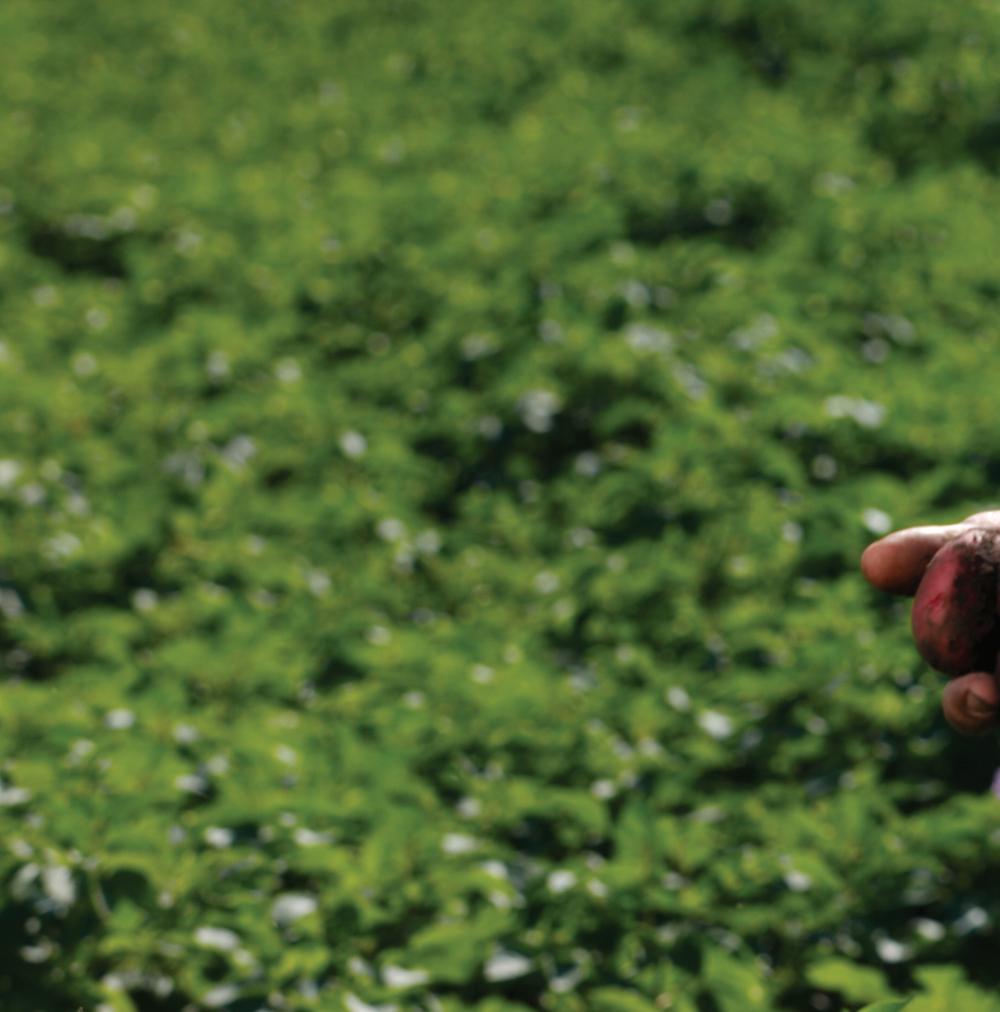



What does church have to do with selling hammers? More than you might think, says Becca Messman, a pastor whose fi rst job out of college was with Home Depot.
“I worked in the Business Leadership Program that was intended to fast-track young talent to middle-upper management, presumably in that company,” she writes in a blog post for The Presbyterian Outlook.
At 23 she joined company executives for the opening bell of the New York Stock Exchange and helped open Home Depot stores in Mexico.
In management she saw sales go up, and sales go down. “I hired people and let people go,” Messman writes. “I sat in an offi ce with a weeping mom who had shoplifted two paintbrushes from the store while her kids waited in the mini-van.”
Young recruits attended blue-sky meetings where new ideas were pitched — everything from starting restaurants to selling beef jerky. “People were rewarded for new ideas and given crystal trophies for entrepreneurial spirit,” but every idea had to connect back to the core of the business. They had to answer the question, “What does this have to do with selling hammers?”
Messman eventually made a career change through a youth program of her denomination and is now the associate pastor of 750-member Trinity Presbyterian Church in Herndon, Va.
“Now I wear a robe instead of an orange apron,” she says. “I attend different meetings with different notions of success and failure, winners and losers. But there is heavy lifting in church transformation that might warrant a forklift and all the best practices of industry.”
She looks back fondly on the sizable investment placed in her and what that said about the company’s values. “It causes me to pose some hard questions to the church,” she writes.
Such as: “How are church leaders held accountable for investing in young talent? How are new ideas fostered and championed? How do we learn from dismal failures as much as raging successes? How do we challenge our ministries that try so hard to please all constituencies with, ‘What does this have to do with Jesus?’”
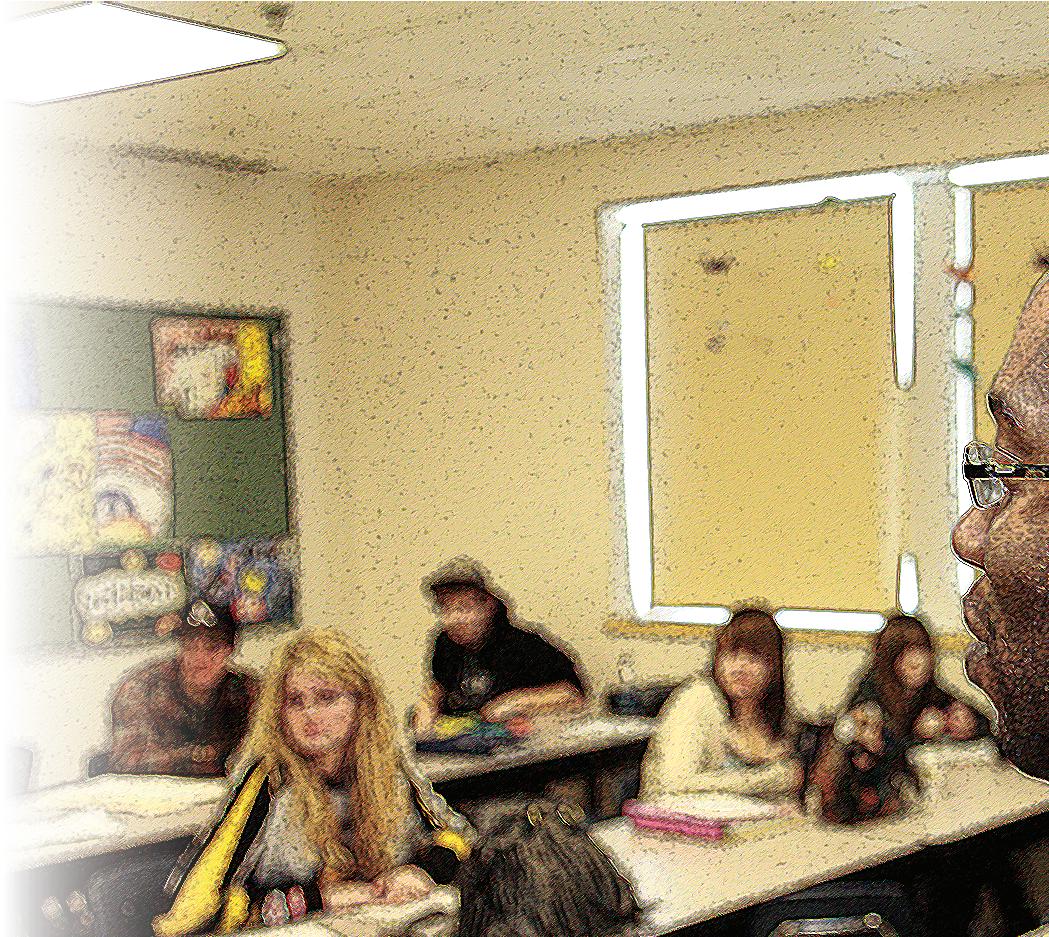

Publicly equipped

If you are a churchgoer, you have probably attended a worship service in which all the Sunday school teachers are acknowledged, thanked and prayed for. A friend of mine told me about a teacher in one church who was offended by this experience. Surprised, my friend asked her why. She replied, “I spend an hour a week teaching Sunday school, and they haul me up to the front to pray for me. The rest of the week I am a full-time teacher, and the church has not prayed for me once.”
In general, the church has done a fi ne job equipping Christians for the “private” areas of their lives: prayer, morality, family life, and so on. However, in general, the church has done a poor job equipping people for the “public” parts of their lives: namely, their work, their vocation. The reality is, most people spend the majority of their time in this latter, “public” area. The teacher’s comment was an important rebuke. When we as the church fail to honor Christians’ work in the world as service or mission unto God, we communicate that what a person spends the majority of their time doing in the world is not nearly as important as what they spend a very small amount of time doing within the church. — Corey Widmer in This is Our City blog
Overheard: “Never throw more balls than you can juggle.” (Attributed to John Naisbitt)


Superfruits for the nation

When it comes to cherries, the Dorsings of Washington have few equals
To your health
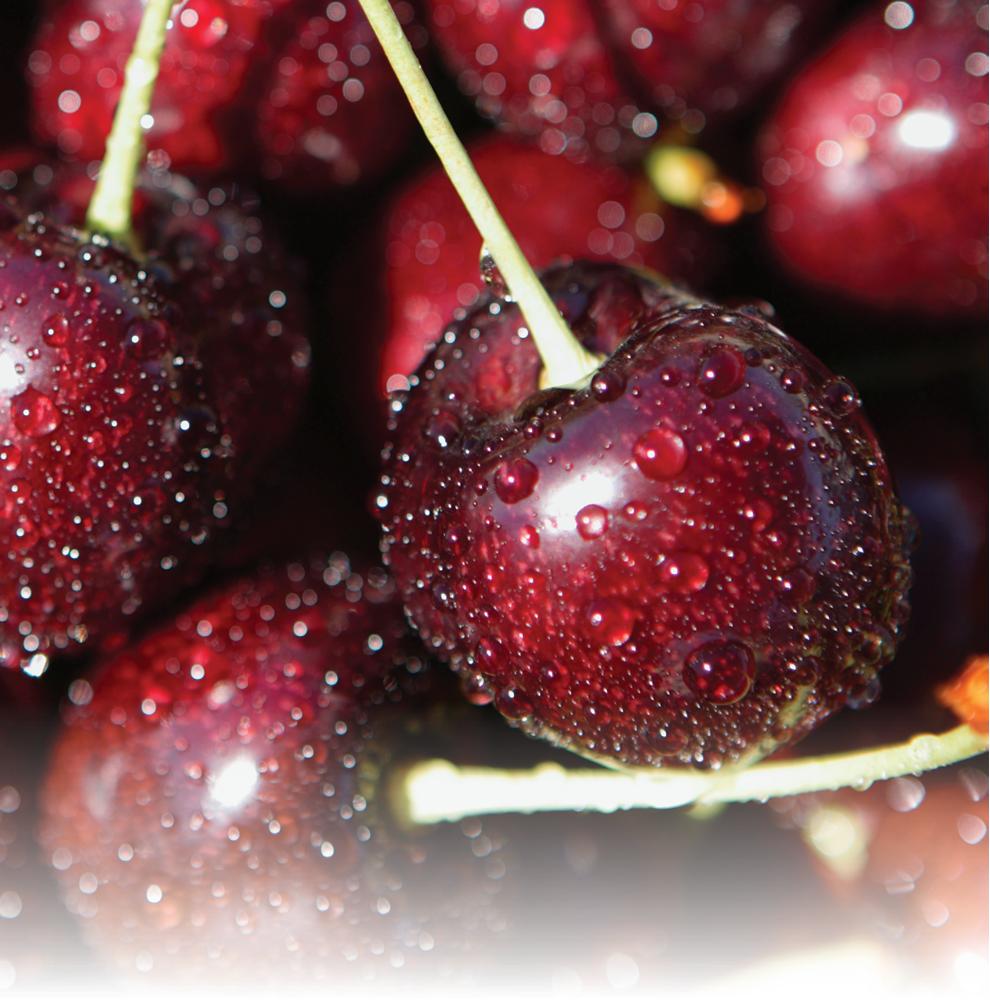
Kevin Dorsing wheels his pickup along the edge of the cherry orchard, looking for a harvest crew. He seems concerned as he nears the last rows. “I’m worried,” he says. “If they’re done already, it means the crop was light.”
Nothing to fear, it turns out. There they are, still picking. Still fi lling bins with plump dark cherries.
The Columbia Basin is the drainage bowl of the
Columbia River in eastern Washington. Today it’s hot and brown. With only fi ve inches of rain a year, it’s like a desert. Broad vistas of sagebrush and withered grass make it appear transplanted from California or Arizona.
Except, of course, where there is irrigation, and there’s plenty of that. Fly overhead with Dorsing in his six-seat Piper aircraft and you see lush green circles cut like cookies out of the landscape by countless pivot systems.
Thanks to the Grand Coulee Dam there is abundant water for irrigation, and inexpensive electricity to pump it.
“Because we can turn the water on whenever we want, we can basically control our environment,” says Dorsing. “We can grow just about anything.”
Diverse crops abound: potatoes (the Basin produces more French fries than Idaho), onions, carrots, corn and peas; just about every kind of fruit (other than citrus); niche crops like cubed hay (for export to Japan); and herbs like mint.
The Dorsing family has been here for half a century. In 1962 Dorsing’s grandfather Karl, a logger from Oregon who sought a safer way to make a living, won the Bureau of Land Management lottery and got the last free tract in the Columbia River Basin. Over time those initial 200 acres were parlayed into today’s 2,500-acre enterprise of apples, cherries and berries and one of the West Coast’s leading processing facilities.
Kevin Dorsing grew up in the family business, running a hay baler by the time he was eight years old. But his ambitions lay elsewhere — commercial aviation. When he went off to college he did not expect to return.
“I was going to fl y,” he recalls. “I was never going to come back.”
At Hesston (Kan.) College he took everything their fl ight school offered — private pilot, instrument rating, multi-engine, commercial. “I have the whole works, all the ratings,” he says. From there he went to Eastern Mennonite University, Harrisonburg, Va., to complete a business degree.
When he came home for a visit he was offered a job. No formal succession plan existed at the time. “I did not want to come back here to be a tractor driver,” Dorsing says.
He and his new wife, Wanda, struggled with the offer.
“The big issue was family,” he says. While aviation still appealed to him, he was aware that many commercial pilots had poor marriages because of erratic schedules and long absences from home.
“We really wanted a good family,” says Dorsing.
The family business won out, and in 1994 he returned to Washington to run the tart cherry operation. Even then he had a glint in his eye for something bigger, like a processing plant he had explored in a college project.
Looking back, he is stunned by the informality of his hiring. While he had a knack for design and systems he
Kevin Dorsing doesn’t dwell on it, but he could. The biggest crops he and his family grow are known as superfruits that brim with life-giving nutrients. Cherries and blueberries, for example, contain everything from antioxidants to melatonin. Plus, they’re good for the waistline and low on the glycemic index. As for apples, well, we’ve all heard about “an apple a day....” ◆
Photo by Lisa Dorsing, Dorsing Designs Photography
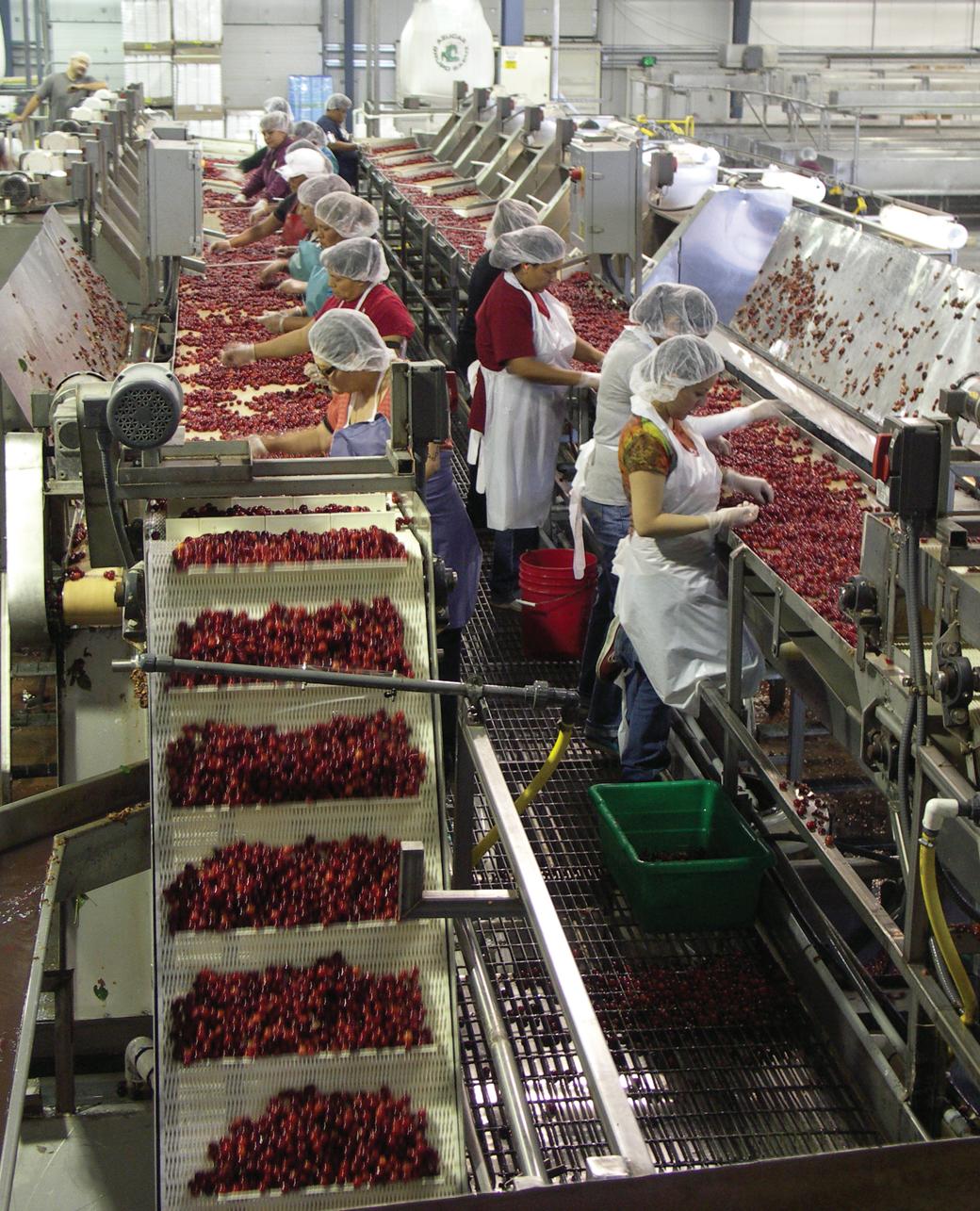
Tart cherries are graded prior to freezing. Many go to the industrial baked goods market.
admits he was very green. “They took a farm boy and made him process food. ‘Go make it work,’ they said. I just shake my head at my Dad — ‘what were you guys thinking, turning this over to a 28-year-old kid?’”
Today the Dorsing enterprise has two sections
— fresh and processed. Brothers Kevin and Scott split executive duties. Scott is CEO of Dorsing Farms Inc., the orchard division; Kevin is CEO of Royal Ridge Fruits, the processing side. Together they employ 125 yearround employees, 50 on the farm and 75 in the plant. Dorsing Farms Inc. grows 2,500 acres of apples, cherries (both tart and sweet) and blueberries along with hay, wheat, certified organic produce, coriander and radish seed, all well-suited to the high-desert climate of sunny days and cool nights.
Their apple variety of choice is Honeycrisp, which they grow on trellises. Branches twine along carefully spaced wires to allow maximum light penetration as the fruit grows (and makes it easier to pick later on).
“It’s the most expensive system but it produces the best apples,” says Dorsing.
Sweet cherries, five million pounds of them, go to the fresh market. Every year some 50,000 skilled seasonal pickers descend on Washington for the harvest. Dorsing Farms will employ 150 of them. The best ones can earn $200 to $300 a day.
Royal Ridge Fruits, the processing division, is the largest producer of frozen Montmorency tart cherries on the West Coast, at 13 million pounds a year.
After mechanical harvesting, bins of tart cherries are rushed to a cooling pad where they are chilled in 35-degree F water for several hours. This makes them firmer for the
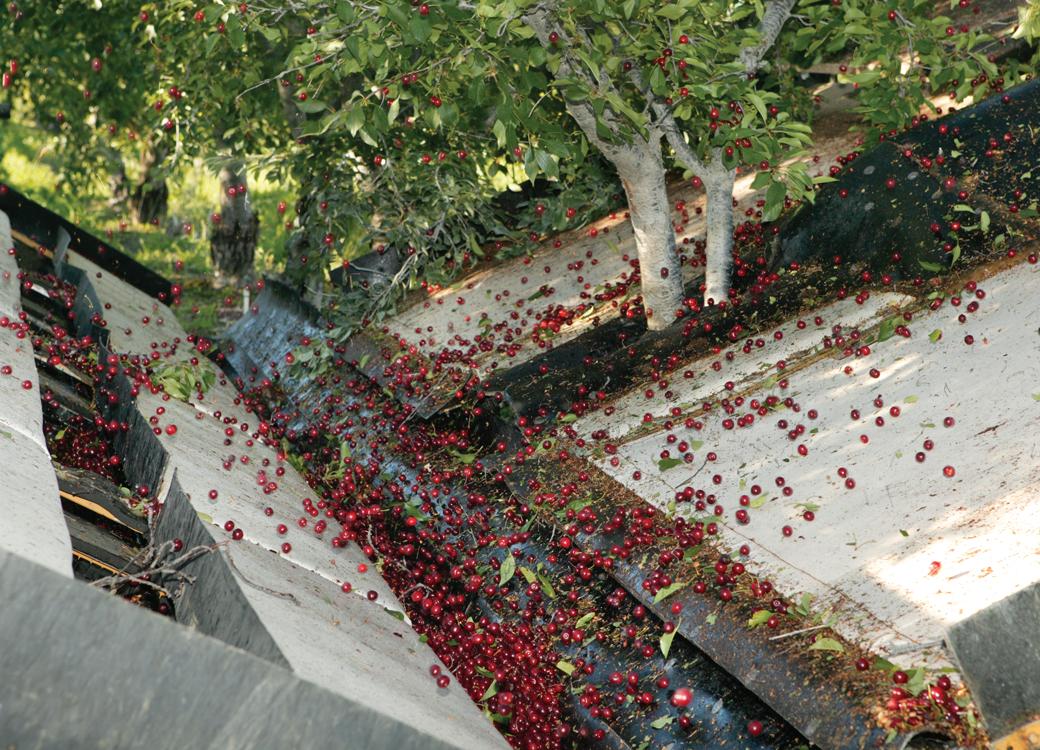
Photo by Lisa Dorsing, Dorsing Designs Photography
A mechanical harvester shakes tart cherries from trees. Sweet cherries are picked by hand for the fresh market.
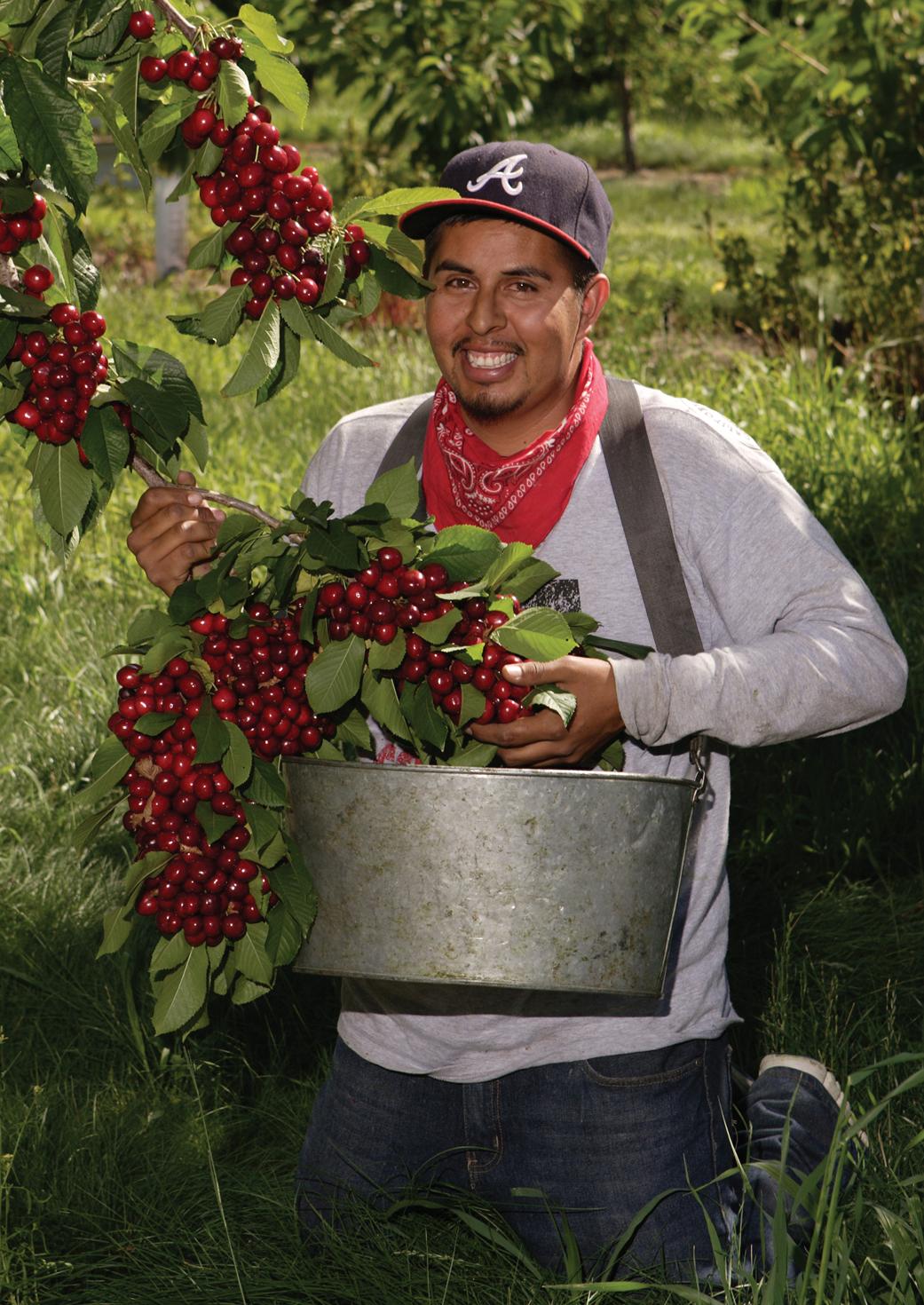
Photo by Lisa Dorsing, Dorsing Designs Photography
Some 50,000 seasonal pickers show up in Washington every year. Dorsing Farms employs 150 of them.
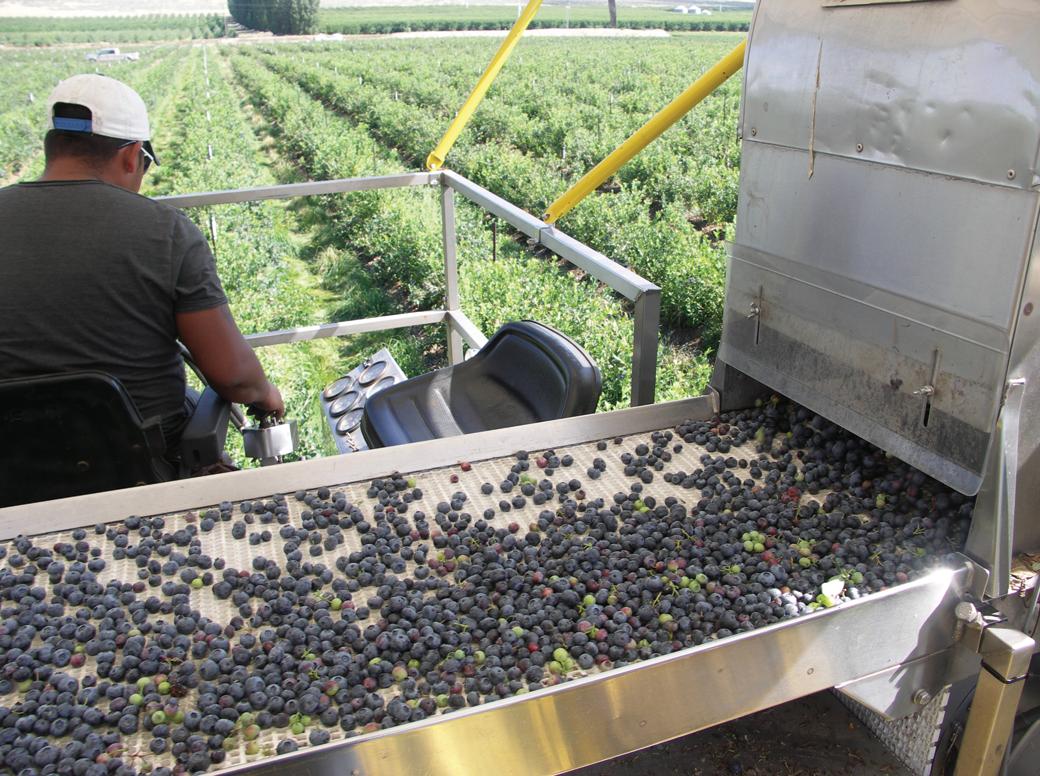
A blueberry harvester gathers this year’s expected crop of 10 million pounds, more than triple last year’s production. Seasonal pickers line up to stay in “tent city,” which comes free with shower and bath facilities.

How they get along
pitting machine, which uses a needle to push out the stone. The tart cherries are frozen for sale to the industrial market for baked goods (such as pies). Some will later be thawed and dried as needed for the dried fruit market. The Dorsings began drying their own cherries in 2006. Now they also have blueberries, some grown themselves and some shipped in from southern British Columbia and Michigan. This year they intend to process 10 million pounds of blueberries, more than triple what they did last year. Strawberries and raspberries are also brought in for drying. In 2010 they began a retail line under their own Stoneridge Orchards label. The Stoneridge brand can be found at leading retailers like Costco, Publix and others. “The foray into retail has generated a lot of excitement for us. The retail market is a whole different way of marketing fruit,” says Dorsing. The processing plant — from vats to quick freeze to bagging line — was entirely designed by Dorsing. Even operating 24/7 year-round, the 150,000-squarefoot facility is already overworked. A 50,000-square-foot expansion is planned. New products being added this fall include chocolate and yogurt-covered berries and dried sliced peaches, which will be picked in California, frozen, and Brothers Scott (left) and Kevin Dorsing split executive duties. Scott looks after the orchards, Kevin the processing. dried in the Washington plant. “Going out and finding new markets gets all of us pumped up,” he says. “We The Dorsing family has been raising fruit for three generations, and a fourth is just around the corner. Seven family members sit on the board of directors: CEOs Kevin and Scott, their father are a company that definitely does not sit still. We love new projects and processes. We love launching new stuff.” Les, uncles Terry and Curt, and cousins Bryce and Patrick. Sister Lisa is a professional photographer with her own company, Dorsing Designs Dorsing’s office in Royal City shows Photography. signs of what keeps him busy. One wall
“We get along great,” says Kevin. bears two pages out of a child’s coloring
Still, any family business can have ups and downs. How do they book, crayoned in an earlier time by sons keep it together if things fray? Trenton (10) and Trevor (seven). Naturally,
Kevin and Scott laugh at the question. they are pictures of bright red cherries.
“In mid-August, between cherries and apple seasons, we drop Beside his computer there’s a stapled everything and all go to the Oregon coast for a week,” says Scott. “We sheaf of by-laws for New Life Fellowship, learn how to get along again.” a local congregation the Dorsings helped
Plus, there’s an annual elk and deer-hunting trip in October. start last year. The family used to attend
“A good time for bonding,” says Kevin. “And re-bonding.” ◆ Warden Mennonite Church, 40 miles away, but longed for something closer to


serve the multi-ethnic and largely unchurched population of Royal City. Its inaugural service last December drew 120 people. Dorsing is proud of the role his company and extended family have played in its formation.
Prominently displayed is a calendar from Ukraine. Besides being on MEDA’s board of directors, Dorsing also serves on the board of Agro Capital Management, a MEDA-related company that sells and fi nances equipment to small farmers in Ukraine. That fi ts well with his concern to support smallholder farmers, not only in Ukraine but also in places like Africa (see adjacent sidebar).
Dorsing resonates with the tensions faced by farmers everywhere, whether big or small. He knows what it’s like to focus heavily on a crop, to think of little else all year, only to see it wiped out by hail or frost. “Going to all that work and seeing it not pay off can be frustrating,” he says. In the cherry business it seems there’s “some incident” every third year or so. Crop diversity helps pick up the slack.
The fourth generation is not far behind. Dorsing’s son Trevor, age seven, works on the cooling pad where bins of tart cherries are chilled in cold water before being pitted. He’s also learning to drive forklifts and tractors.
But as every farmer also knows, there are payoffs.
Marketing with cause Dorsing, for one, fi nds it all spiritually fulfi lling. He idenBeginning this fall, packages of Stoneridge dried fruit will carry a special message from MEDA. Each package will bear a little sticker pointing tifi es with those who feel a sense of “calling” in their work. In his company, that call is expressed by deliber-to MEDA’s “Helping Farmers” project. Peel it off and ate efforts to build robust there’s a message underneath with directions to a employee relationships and special website to learn more. Traffi c will be tracked to to share bounty widely. see how many people visit the site. “We’ve been in a service
Kevin Dorsing is enthusiastic about the MEDA mode for a long time,” he programs he supports and hopes others will be drawn says.to this platform. “The point is to encourage others to try it,” he says. One persistent chal-
He sees the foray into cause marketing as help- lenge for Dorsing’s industry ing not only MEDA but also his company, as it shows is getting labor, not only what kinds of things they support. seasonal pickers but also
“It’s not just a benefi t to MEDA. It’s a benefi t to skilled labor and executive us, too,” he says. positions. Not everyone is
“God has blessed us with a gift for business. eager to relocate to an out-MEDA has been good at showing how others have of-the-way locale like Royal done it. It’s been great to be able to support the orga- City.nization.” ◆ “If I’m not sleeping, it’s about a labor problem of some sort,” he says. Housing 150 pickers can be a challenge. The Dorsings maintain their own “tent city” featuring large rented tents with shower and bath facilities, all regulated by the state health department. Pickers, who stay for about a month, occupy the tents for free. “It’s a good draw for us,” Dorsing says. “People wait in line for them.” While fruit growers often feel over-regulated, Dorsing applauds the State of Washington for working closely with producers to develop a practical tent program. The company also makes permanent housing available to selected year-round employees. It provides the water and sewer system, drills a well and puts in the foundation. Employees are responsible for constructing the house, which the company fi nances at no interest. At present there are more than a dozen such houses in two separate locations. “We do this so they can build equity,” says Dorsing. “It’s good for them and good for us. It builds loyalty. Housing is really tight, and there’s a waiting list.” On a different labor front, Dorsing watches keenly the ongoing debate on immigration in the southern U.S. Companies like his rely heavily on migrant workers who are eager to take the laborious jobs that most domestic workers disdain. He is concerned that hard-line anti-immigrant attitudes could harm the entire economy. “If they do close the border down,” he says, “our industry is in trouble.” ◆





Artistry in the deli case
Welcome to a world of patiently aged cheddar and a bologna you’ll never forget
Dan Neff reaches into the refrigerated display case, pulls out a chub of sausage and carves off a sample. It’s Lebanon Bologna, a robust morsel with hints of tang and smoke.
Another sample is sweeter and milder. It’s Sweet Bologna, a recipe he developed to improve on a local tradition of smoked farm style bolognas. No wonder he beams with pride; it is nothing short of captivating.
Then it’s to the cheeses, and a sampling of Quebec cheddar, aged seven years. This is no wimpy cheese; it’s ripe with character.
As third generation owner of S. Clyde Weaver Meat and Cheese, Neff spends a lot of time around his two key products. His main store in East Petersburg, Pa., sells — brace for it — 150 kinds of meat and another 150 of cheese, not to mention a mouth-watering array of delicacies ranging from salads to peanut butter pie.
Spend some time with him and you find he is not just a storekeeper, not just a purveyor of sandwich fixings, but an artist whose canvas is the human palate. When Neff strides into work and dons his apron, he channels a vibrant history of family enterprise.
He was born two miles from where his main store now stands. Back then it wasn’t surrounded by a sea of auto dealerships, as it is now. He grew up in the shadow of the family business and its mythic traditions of flavor and innovation, both of which remain crucial to him today.
His grandfather, S. Clyde Weaver, entered the meat business in 1920. He and his wife Emma first went to market in Lancaster and then several years later to Rosemont and Lebanon, Pa.
In the 30s they started making boiled hams that could
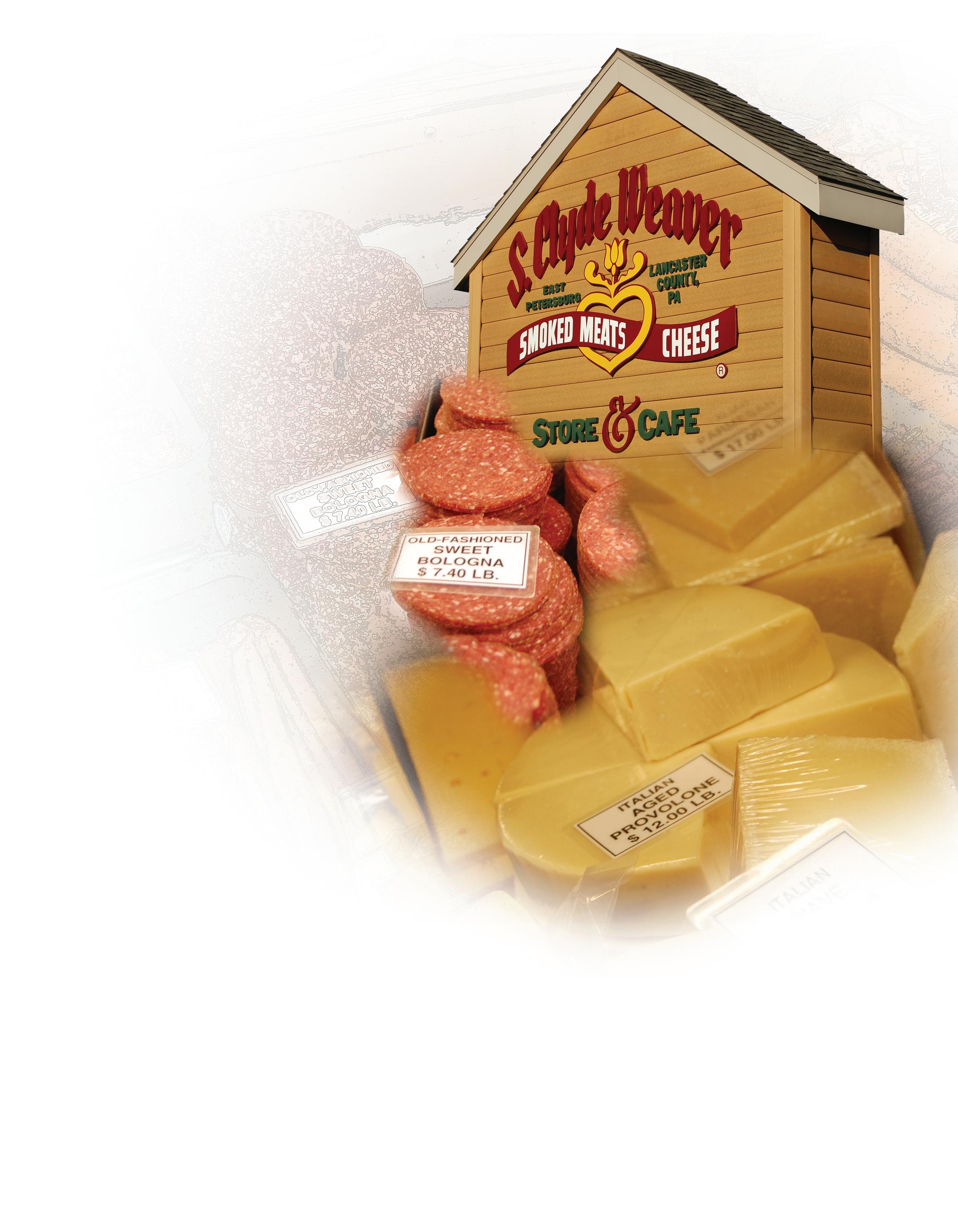
A little science, tweaked recipes
be chilled for lunch meat. Refrigeration and careful was growing beyond the icebox stage and this put them at the front edge of aging join forces the emerging lunch meat business. “That became their keystone product,” says Neff. to improve on “It put them on the map.” Neff’s father and two other sons-intradition law bought the business from Weaver, their father-in-law, in the 1950s. The next two decades were growth years; more and more market locations were added. Dan Neff worked in the family market from the age of 10. “We’d load the unrefrigerated truck at 3:30 in the morning, then drive to Wayne near Philadelphia and drop off product, then go farther into the city to the 69th St. Upper Darby market and set up a market which would run from 6 a.m. to 1:30 or 2 p.m. Then we’d pack up the unsold product and make the 65-mile trip home.” In college Neff carefully tended the building blocks of a career that he would find personally fulfilling and honoring of the past.
At Penn State University College of Agriculture he chose a broad curriculum that would let him select what he needed: agriculture, food science, accounting, business and refrigeration. He graduated with a bachelor of science degree in 1971.
With the military draft still in force, Neff volunteered for alternative service in Peru with Wycliffe Bible Translators. His assignment was in community development but when the commissarian suddenly left with health problems Neff offered to take his place. “Nobody had ever volunteered for that before,” he recalls. He spent the next two years managing food services for 300 people at the base in Yarinacocha, which was serving the translators in 30 languages in the jungle and mountains.
After a year of service he traveled home and married Carol Herr from his home area. They both served in Peru for the next year and a half. When they returned to Pennsylvania in 1974 he joined the family business, looking after purchasing, administration, market schedules and general management alongside his Dad, who with his brother ran the operation until 1985 when it was sold to the third generation. In 2010 Dan Neff became majority owner after he bought his brother’s share in the business.
Today the company is present in eight farmers markets (including the historic central market in downtown Lancaster). In addition to its main store and restaurant in East Petersburg it operates a second shop and restaurant in a shopping center in Lancaster. Altogether Neff em-
ploys 60 full-time staff and 150 part-time. Neff likes to develop or tweak products that others make and supply to him. Dan Neff: The most fun is relationships, “the personal side,” but a close second is One popular item is Lebanon discovering and developing new products. Bologna, a “semi-dry fermented sausage” which has to be made within a 70-mile radius of Lebanon county in order to use the name. Some liken its taste to summer sausage or Thuringer. Local lore has it that Neff’s great-grandfather Daniel Weaver may have been the first to produce the legendary sausage back in 1893. “Great Grandpa apparently got his recipe from a tramp on the road who had this old world recipe and offered to swap it for a few nights’ lodging,” he says. Even better, to Neff’s taste, is his own Sweet Bologna. Working with a local butcher, and relying on early experiments he conducted on lactic starter cultures, he tinkered with the ingredients, sugar levels A special stash of and cure times to produce a distinctive sweet-sour flavor. cheddar is getting Back in the 1990s Neff older and older, but was looking for a new source of cheddars after his Vermont supyou’ll have to wait plier decided to focus on its own label. He came upon a leading Quebec producer and is now until 2020 to try it its sole importer. Despite higher price and strict import laws, he likes the Canadian product because it has lower moisture and more curd texture than its American counterpart. He ages it himself and distributes it across the country under the Old Quebec label. The oldest he sells regularly is seven years, but on a tour of his refrigeration vaults he points to a special stash that he has been aging since 1999 for the company’s centennial in 2020.

Neff also sells Ohio and Wisconsin cheese as well as smaller batches of local cheese made in the plant of an Amish family at the south end of the county.
He’ll gladly discourse on the character of a good cheese, extolling a “high-open swiss” or an “over-set swiss with lots of eyes,” referring to the large air holes or bubbles that are

Making choices
We invited Dan Neff to share a few personal words about faith and his workplace culture. We got him on a busy day.
As a businessman I stand at the center of my community serving many interested parties. These include: family, business, church, employees, customers and civic organizations. While writing these lines about balancing priorities, choosing avenues to support, and determining the priority of today’s activities, my fire company pager sounded and notified me of a barn fire two miles north of town. The Marketplace sidebar would have to wait. I am a volunteer driver for the fire company.
That was 8:52 a.m. It is now 12:30 and I am back to choosing my priorities to catch up on the things I had planned for the morning.
Yes, we all choose. What does it mean to be the hands and feet of Christ in 2013? I enter each day with choices. Will I be short-sighted or long-sighted? How can I live out the directives of Christ amid today’s opportunities? For the short term I need to respond to the immediate tasks of the day, realizing that the greater calling is for the long-term good of those around me. For me that means being purposeful about understanding and improving the culture of the company.
When I studied agriculture and business in college, not much was said about company culture. I continue to learn how company culture plays a part in the lives of owners, employees, customers and others, while at the same time affecting profitability and longevity for the company. With Christ as our example, we serve each other in a myriad of different relationships, with the ultimate goal of serving his kingdom. — Dan Neff hard to find in supermarkets. The large eyes signal the quality of longer curing time which gives the bacteria more time to work its magic and produce a distinctive nutty, sweet flavor, but they can bung up a supermarket’s mechanical slicers and packagers. Accordingly, the industry has redefined grading specifications so that lower-quality swiss can be called Grade A even though it has fewer, smaller holes and thus less flavor. “Grading has changed to accommodate packaging, but we still sell what is considered an off-grade with more eyes,” says Neff.
That said, he concedes that supermarkets are doing a better deli job than they used to, though most offer only a third as many cheeses as he does.
“We are a second stop, we know that, so we have to do better.”
Like many small business owners, Neff chafes
under the frustrations of government bureaucracy such as the logistical demands of the new health care law and an “unproductive and self-consuming” dollar-a-week municipal tax that must be tracked and filed for each employee in every jurisdiction where he operates.
Still, he enjoys the life of a culinary artist and says he’s having fun preserving an almost century-long tradition as a seller of quality foods.
“The most fun I have is in the relationships we have with suppliers, employees and customers, the personal side. But a close second is discovering and developing products, hearing what people would look for or want and saying ‘I’ll work on that and see what I can do’.”
Upcoming new products have to do with “open-fire flavors” such as pulled pork and barbecued pork, both new to his traditional market sector. He’s also resetting the seasoning on his bratwurst and working on more soups and cheeses with a flavor bump of hot peppers.
With three sons now involved, Neff’s business is entering the exclusive (and elusive) fourth generation. According to the Family Business Institute, only 12 percent of family businesses are still viable into the third generation, and only about three percent survive into the fourth.
“What has allowed it to work for us is the consolidation into one family. You have to have a new entrepreneur in each generation,” says Neff. ◆
The Old Silk Road
Tagging along with Marco Polo
Few MEDA staffers have logged more miles serving the poor than Henry Fast. In 23 years with MEDA (1979 to 2002) he made 66 overseas round trips and spent 1,192 days away from home (more than three years). Some of his adventures appear in his soonto-be-published memoir titled Where the Pavement Ends: (Mis)Adventures in International Rural Development. The following excerpt describes a consulting trip to China in March, 1995, one of many he made to that country on MEDA’s behalf. A full review of his book will follow in a future issue.
by Henry Fast
The lumbering Russian-built Tubolev Tu-154 jetliner slowly lifts off from Urumqi, capital of Xinjiang in northwestern China and points its nose in a southwesterly direction bound for Hetian (or Hotan in Uyghur). Our flight takes us across the harsh Taklimakan Desert, the world’s second largest desert with active, shifting sand dunes. Extreme maximum and minimum temperatures, lack of water, no food sources, and blinding sand storms make overland travel virtually impossible. Its name, Taklimakan, has variously been translated as “he who goes in will never come out” or “the desert of death.” No wonder Marco Polo skirted around its edges in his 13th century travels. Unfortunately, clouds and haze prevent us from catching an aerial glimpse of the dunes before the late afternoon sun sets.
We are a team of six rural development specialists — three Canadians, one American and two Chinese — three men and three women. (The American is former MEDA colleague Calvin Miller, who spent many years in microfinance and agricultural work in Bolivia and now works for the United Nation’s Food and Agriculture Organization in Rome.) Our mission is to design a poverty alleviation project for the benefit of women in rural farming areas.
On arrival in Hetian, we are given a royal welcome by a large group of top brass including the mayor, county governor and two television crews, while pretty young girls in ethnic dress give each of us a bouquet of silk flowers. We are then whisked to our hotel where we are treated to a welcoming banquet with more strange foods than you can shake your chopsticks at. A roasted lamb’s head with its blank stare sits on a platter in the center of the table. During this trip we soon learn this is sheep country and that there are countless ways of preparing mutton — boiled, roasted, mutton soup, mutton stew, mutton-filled buns, lamb pastries, lamb lung, stomach, and lamb-liver shish kababs. Young waitresses with their cute, white Muslim caps just keep bringing more dishes for the tabletop lazy-Susan until they are piled on top of each other. We spend the next three weeks traveling westward by road visiting oasis communities along the southern edge of the Taklimakan Desert. At each stop we are treated to a welcoming lunch or banquet and another before our departure. More mutton dishes, of course, but also plump grapes, sun-dried raisins, walnuts, apples, pears, apricots, sunflower and watermelon seeds, pomegranates, and sweet honey-dew melons that have been stored underground for six months. Delicious. Remarkably, this whole region only gets 35 mm (1.3 inches) of precipitation a year while the evaporation rate is at least 10 times that. These oasis communities owe their survival to the streams of glacial meltwater from the nearby mighty Kunlun and Karakoram Mountain ranges to the south extending into Tibet and India.
The paved road we are on is the southern leg of the once-famous Silk Road connecting China with Europe. Marco Polo, the Italian merchant from Venice, passed this
Henry Fast (left), seated with former MEDA colleague Calvin Miller, enjoys one of many ceremonial meals held in their honor.
This is sheep country; there are oh-so-many ways to prepare mutton


No computer needed: Henry Fast, center, interviews a local credit officer who shows him how to make an abacus dance.
way in about 1271. The northern leg goes around the other side of the desert.
The development of the Silk Road spanned many centuries dating back to the Greek and Roman empires BCE. Warriors, merchants and traders from both directions gradually pushed their way over the icy mountain passes carrying with them interesting commodities and works of art. In addition to silk, caravans heading west carried jade, bronze, lacquer, iron and ceramics. Eastbound traffic carried gold, ivory, glassware, precious stones and metals. Few merchants traversed the full length of the road likely because of the long distance, its arduous nature and the risk of attack by bandits. Most simply covered part of the journey, exchanging or selling their wares and then returning home with the proceeds.
Small-scale entrepreneurs, like this flat bread vendor, abound in China, but many have difficulty obtaining small business loans.
Our team is afforded
remarkable freedom to visit wherever and whomever we like. In this kind of work, we get to go places where no tourists ever go or perhaps would not even wish to go. Since our goal is to design a rural poverty alleviation project, we want to meet with poor women in their own setting. We enter a village and walk along a dusty winding side road in search of a below-average household, being careful not to step in deposits of animal dung. One can generally tell from the type and condition of the earthen wall and wooden gate if the family dwelling behind the structure is well-to-do or not. We enter a shabby-looking courtyard and are greeted by a woman who appears much older than her fortyish years. Quickly straightening out her hair, white cap and navy jacket, she invites us into her one-room, mud-brick house. In one corner, an open fireplace along with a couple of black pots makes up the kitchen. The smoke somehow has to find its way up through the blackened roof beams. In another corner is the brick platform bed supposedly big enough to accommodate the whole family. Through an opening under one side of the bed can be placed hot coals for warmth during the cold winters. There is no elec-
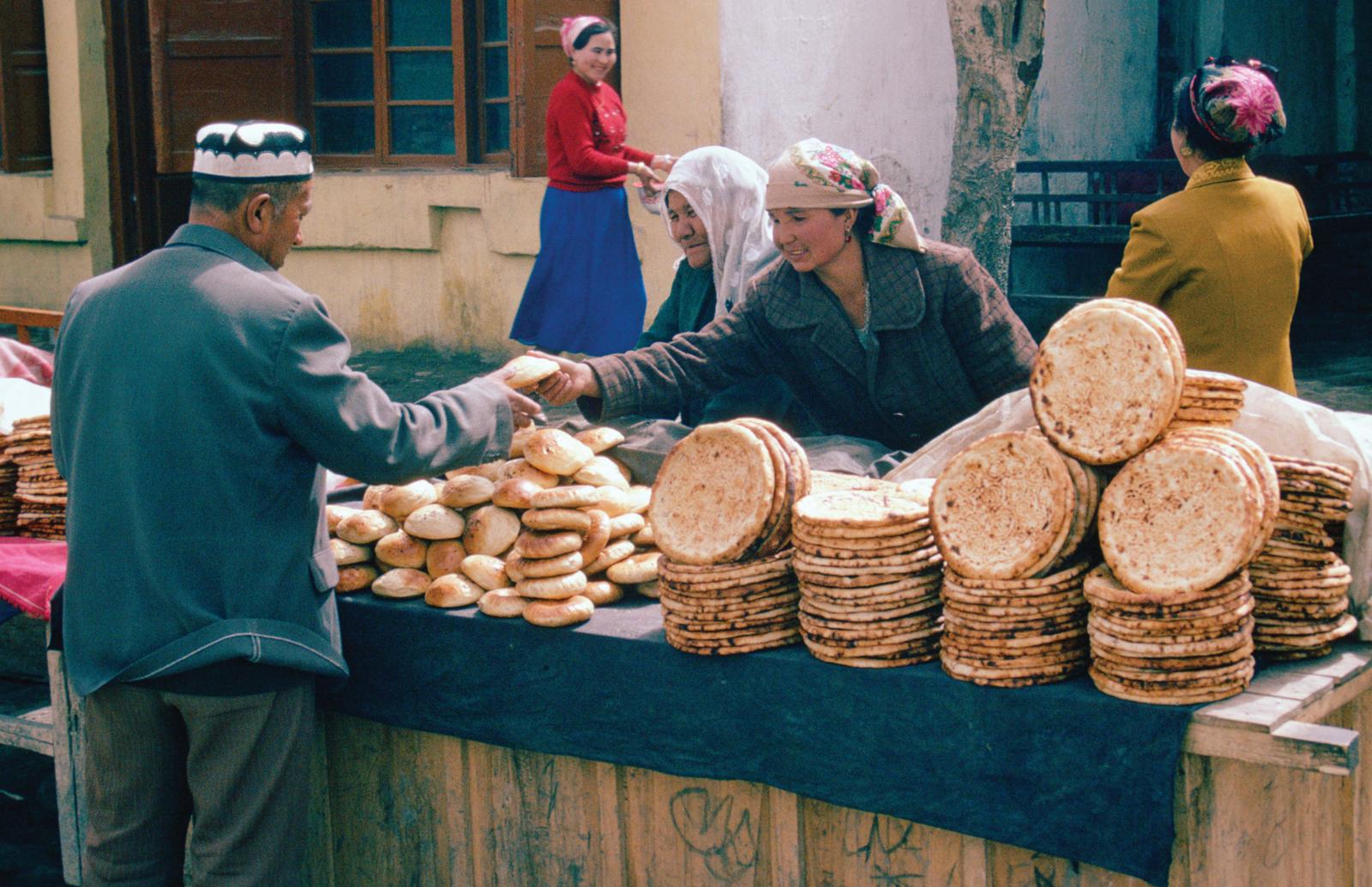
tricity or running water. A chest of drawers, one wooden chair, an oil lamp, a small mirror and a calendar picture of a tropical waterfall pretty well completes the decor.
We ask about her family and how she makes her living. Turns out she’s a widow with three children, a daughter aged 23 and two younger sons. We also learn she suffers from a heart condition. She cultivates four mu of land (2/3 of an acre); three mu of wheat and one of cotton. After wheat harvest, she plants 2.5 mu of maize and half a mu of vegetables, most of which she sells in the local market. Cotton is a cash crop and is sold as well. Her wheat and maize production is for home consumption but only lasts about 10 months of the year. In the remaining two months, she has to come up with cash to purchase additional food.
Does she have any livestock, we ask. Yes, a donkey, a milk cow and one chicken. With a small bank loan of 500 Yuan ($85 Cdn) she purchased two young sheep that she fattened for three months just prior to the last Muslim festival and was able to earn a small profit of about $10. To augment her meager income, she spins a bit of wool each week and does some carpet weaving.
Later we estimate that this family of four earns less than a dollar per person a day, well below the United Nations poverty benchmark of two dollars a day. What kind of program can we design that would best help this family and others like it? (See below)
One morning we climb aboard our minibus to
Let the women choose
continue our journey westward. The wind has picked up and the sand storm is so bad that at times the driver can hardly see the road. Ribbons of loose sand form across the road. Even with the windows tightly shut, you can feel the grit between your teeth. Finally we reach Kashgar (Kashi in Chinese), an ancient city at the western tip of the Taklimakan. A short distance farther west, the Karakorum Mountains rise to over 7,000 meters bordering Kyrgyzstan, Tajikistan and Afghanistan. I think to myself, it’s not quite the edge of the world but one can almost see it from here. This is where the northern and southern branches of the Silk Road converge before continuing on up into the mountains. Kashgar’s Old City has long been at the crossroads of traders and has been called the best-preserved example of a traditional Islamic city to be found anywhere in Central Asia. On Sunday, we visit what is said to be the largest weekly market in Central Asia — thousands of farmers, vendors, housewives and artisans congregate in this huge, mostly open-air market selling everything from ground spices and powdered scorpions to live sheep, donkeys and camels. We see silk and wool carpets, copper teapots and wooden jewelry boxes. If you need your beard trimmed or head shaved, that’s available as well. We push our way through the chaotic crowds of people dressed in a colorful mixture of ethnic dress including tall bushy fur hats, white Muslim caps, felt skirts, colorful scarves, and thin brown hiFew of the women Fast’s team visited had ever taken out a bank loan to finance business activities. Some had tried (if there was a bank nearby) but were refused because they had no collateral or the loan jabs. A signboard above the entrance of what looks like a government building has its name in three lanrequests were too small. All said they would gladly pay even 12% annual guages: Chinese, Uyghur and Russian. interest (six times the official bank rate), as their profits would more than At the start of a mission, I somecover the cost. times tell my team members to be
The team designed a program in which women could borrow $100 for prepared to spend many long hours six months at 1% interest per month. If repaid on time, they would qualify together, uncomfortable travels, for larger loans. And they could decide themselves how to use the money, strange foods and a different bed evrather than being told what to do by bureaucrats. ery few nights, so that by the end of
Soon there was a waiting list. Some women wanted to raise small livethe mission we will either be the best stock while others wanted to open a small retail shop, grow vegetables or of friends or no longer be on speakprovide transportation services. ing terms. Clearly, this time we have
Not every business was successful but loan repayment rates exceeded developed close friendships. Back 90%. in Beijing, we choose a small simple
Within two or three loan cycles it was clear the scheme had boosted Chinese restaurant down the back the women’s self-confidence. They also grew to like the requirement that alley from the hotel for our farewell 10% of each loan went into a savings account for future growth. It was dinner. the first time they’d ever had a bank account of their own. ◆ Not one of us orders a mutton dish.◆
Diet for a hungry world
A photographer tracks a week’s worth of food
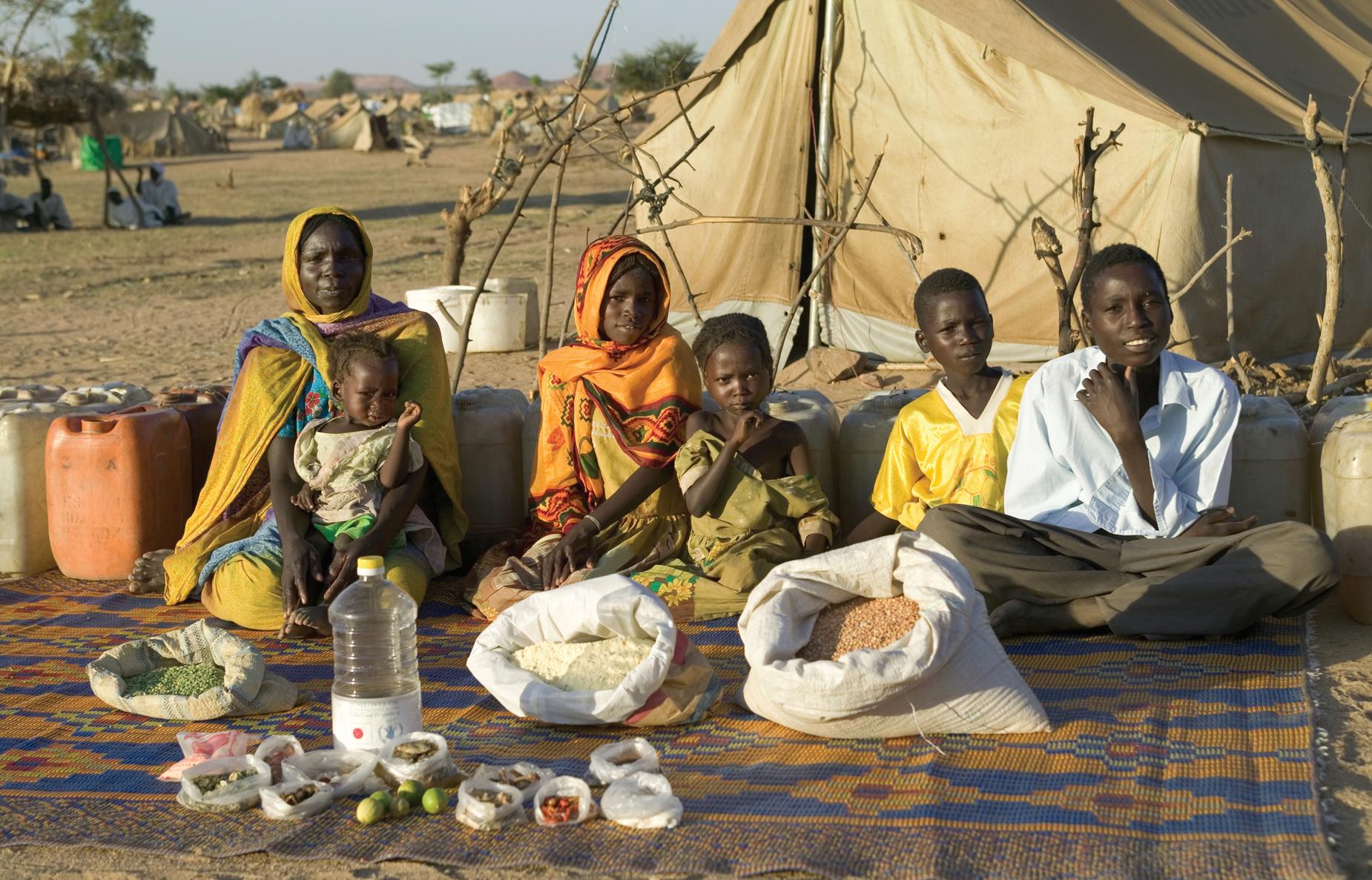
One week’s food for the Aboubaker family (Sudan), who live in a refugee camp in Chad: sorghum, cornsoy, legumes, a bit of goat meat, limes and some dried veggies.
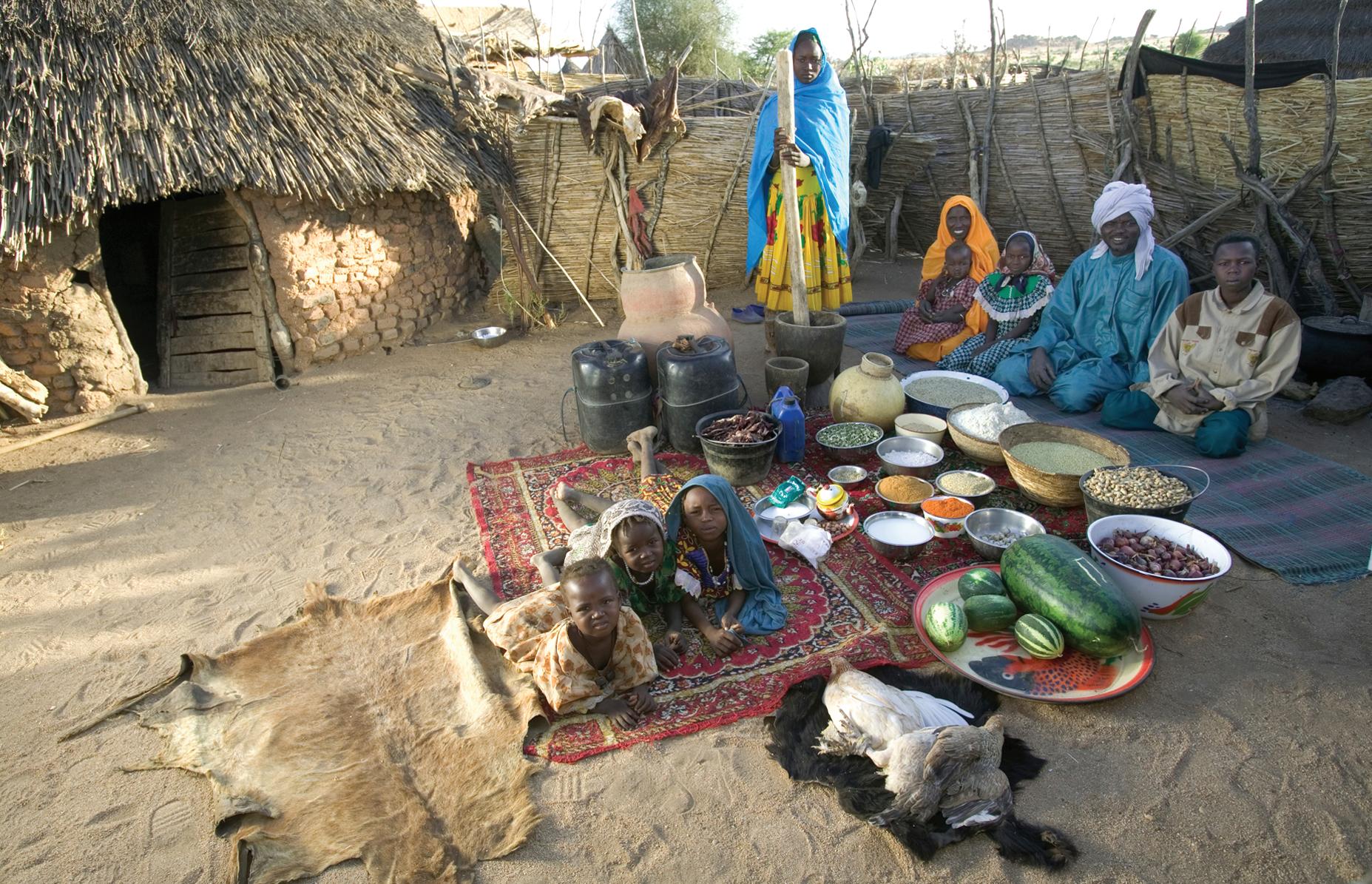
One week’s food for the Mustapha family in Dar es Salaam village, Chad: millet, sorghum, milk, chicken and goat meat, melons, dates, dried veggies, peanuts.
Peter Menzel embarked on an unusual project — photograph people around the world and show what they eat in a week. He and writer Faith D’Aluisio followed 30 families in 24 countries as they farmed, shopped, cooked and ate. The resulting “culinary atlas” was published as Hungry Planet: What the World Eats. Menzel graciously gave us permission to reproduce four of the photos.

© Peter Menzel/menzelphoto.com
One week’s food for the Ayme family, shown at home in Tingo, Ecuador in the central Andes: potatoes, rice, corn and wheat flour, milk, plantains, bananas, citrus, veggies.

© Peter Menzel/menzelphoto.com



